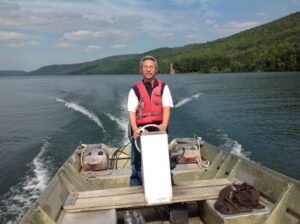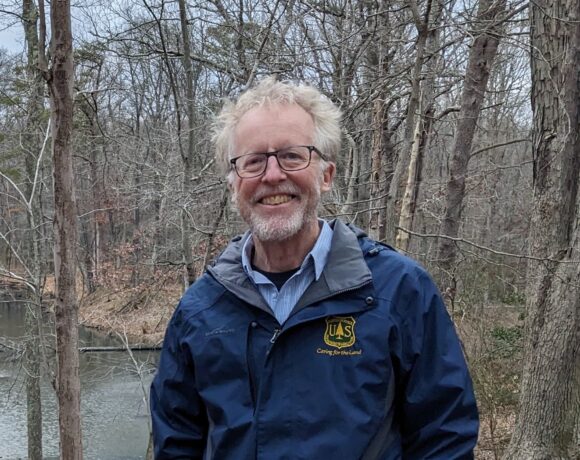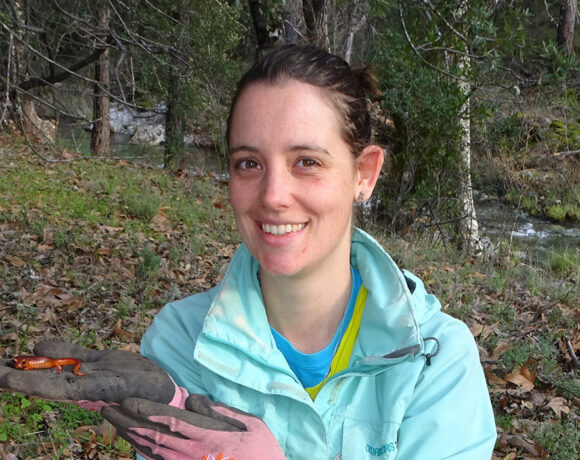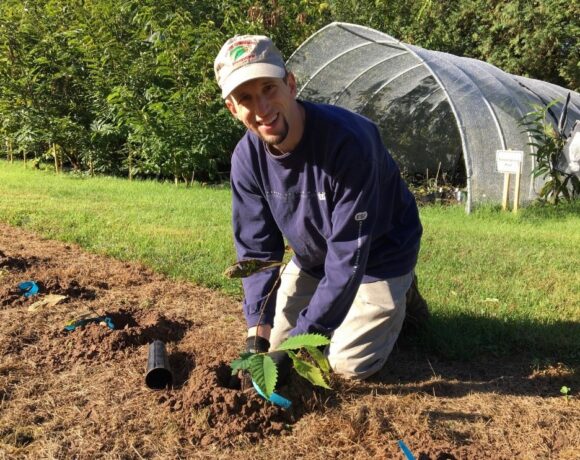This month, we hear from Dr. David Wong, who seeks workable solutions to managing aquatic invasive species, and is currently exploring novel tools like detection dogs. NYISRI is pleased to feature him in this researcher spotlight:
What kinds of research questions related to invasive species are you currently asking?
What is a better approach to managing aquatic invasive species? As we know that prevention is the most efficient and cost-effective management tool. However, residents and resource managers are usually more concerned with the invasive species in their lakes and rivers. In most infested waters, eradication is less likely, if not impossible. Finding workable solutions to manage and contain existing populations of one or multiple species is as important as preventing new invasion to a waterbody. Therefore, aquatic invasive species management should be an integrated and systematic approach.
What are the basic methods you are using to answer your research questions?
My methods include literature research, laboratory studies, field tests, and ecological modeling.
Do you have a personal story or path that led to your interest in this research?
While studying zebra mussels in the Hudson River 22 years ago with Dr. Jeffrey Levinton from Stony Brook University, I just started to learn these tiny but powerful creatures. They are originally from the Black Sea and Caspian Sea region in Europe and were first documented in the Great Lakes in mid 1980s. During that time, I also heard that another invasive mussel, the green mussel Perna viridis, had invaded several harbors along the Florida coast. It reminds me that any species may become invasive, whether it is a temperate freshwater species from Europe (i.e., zebra mussels) or a tropical marine species from Asia (i.e., green mussels). This is a big problem to the invaded ecosystem and the local economy. This issue will get worse before it gets better globally. This led me to do invasive species research and management.
How does your research relate to a wider field of invasive species prevention/management?
The deliverables from my research (which are also partially contributed by my colleagues and students) include establishing criteria for lethal temperature for both quagga and zebra mussels, documenting effectiveness in mussel detection using scent detection canines, and efficiency of livewell flushing to remove mussel veligers, etc. These deliverables are valuable for boat inspection and decontamination to prevent the spread of invasive zebra and quagga mussels in New York and many other states.
What’s the most important thing about your research for stakeholders, managers, or policy makers to know?
The most important thing is that scientific data driven policy and management tools are effective and workable. A better approach should be cost-effective and environmentally friendly.
What do you hope the long-term impact of your work will be?
Stakeholders use scientific data collected from my research for developing aquatic invasive species management policies and implementing control techniques in the field. My hope is that: 1) my work can have a long-term impact to our communities in invasive species management, such as using more environmentally friendly approach for prevention and control; and 2) invasive species spread and environmental impacts will be minimized in the long-term with all parties working together to keep our aquatic ecosystem sustainable.
Is there anything else you’d like to add or tell us about your work?
While managing invasive species, we also should pay attention to the native species in the treated waterbodies. For example, there was a huge invasion of bladderwort to Pierpont Meadow Pond in Dudley and Charlton, MA about 20 years ago. The floating weed wrapped around docks, impeded swimming and boating and was a terrible eyesore. So, yearly chemicals have been applied to this lake since then. Lately, residents are starting to question why they cannot see native snails or crawfish in the water anymore, which may or may not be a result of the yearly chemical application. Therefore, more environmentally friendly and sustainable approaches should be prioritized in invasive species management.
There is a growing demand for appropriate management of aquatic invasive species in lakes and rivers in the northeastern U.S. and worldwide. I am currently working on a book (expected Fall 2022) titled “Invasive Animals and Plants in Massachusetts Lakes and Rivers – Lessons for International Aquatic Management”. This book covers biology, invasion ecology, sightings, and control techniques of 4 invasive animals and 15 invasive plants in Massachusetts lakes and rivers: Asian clam, zebra mussel, Northern snakehead, Chinese mystery snail, hydrilla, curly pondweed, Eurasian water milfoil, variable milfoil, parrotfeather, fanwort, European naiad, South American waterweed, swollen bladderwort, water chestnut, water hyacinth, European waterclover, yellow floating heart, common reed grass, and purple loosestrife. I hope this book will be a valuable product and reference for our communities fighting aquatic invasive species worldwide.
Read more researcher spotlights:















